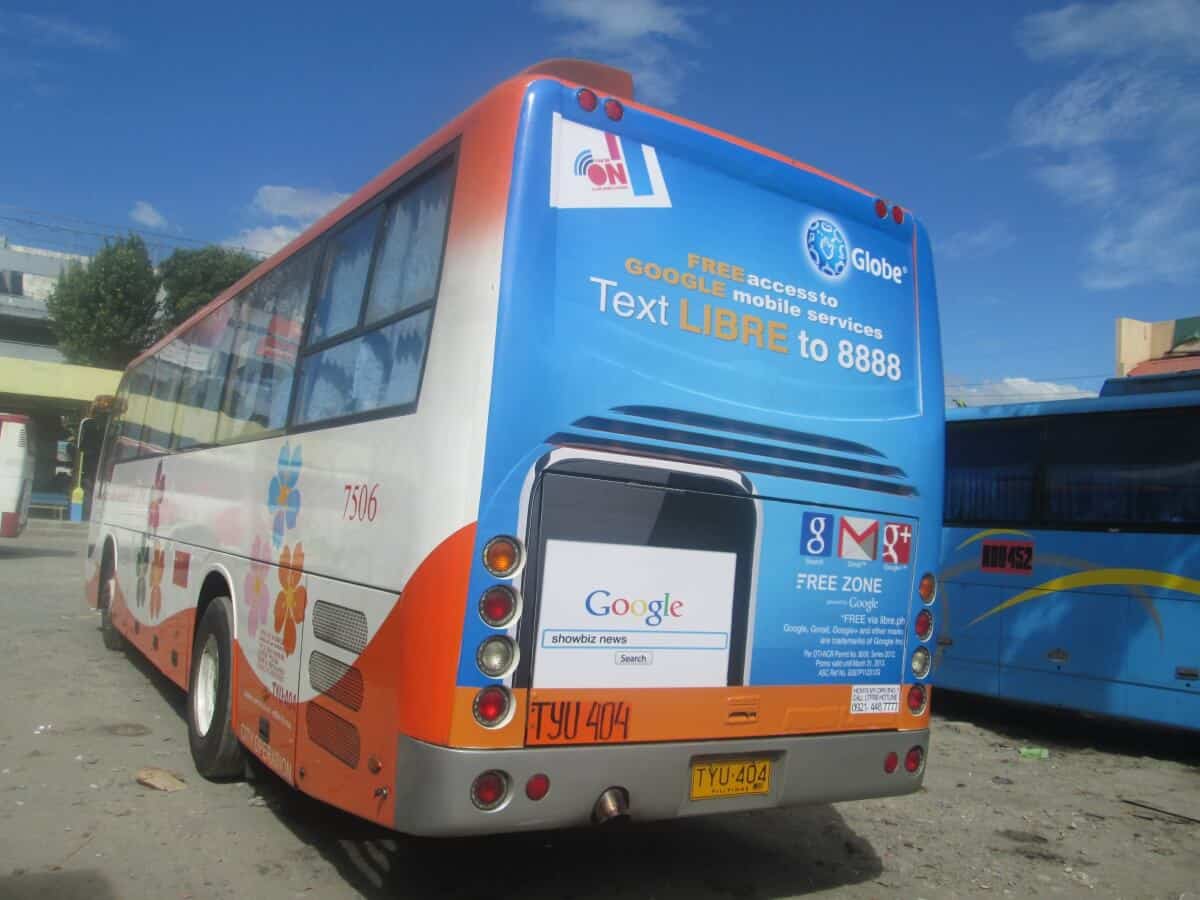Transit Advertising Philippines for Unmatched Brand Name Presence
Transit Advertising Philippines for Unmatched Brand Name Presence
Blog Article
Exactly How Transportation Marketing Can Change Mass Transit Spaces Into Dynamic Advertising And Marketing Platforms
Transit advertising holds considerable potential to redefine public transportation rooms into vivid advertising systems that educate and engage. By using cutting-edge formats such as interactive booths and digital screens, brand names can not only reach a varied target market yet also improve the general traveler experience. This method produces an one-of-a-kind opportunity for brand names to get in touch with customers in a setting that is commonly overlooked. As we explore the diverse advantages and progressing strategies of transportation advertising and marketing, it increases the concern of exactly how this transformation could redefine our interactions with both brands and the urban atmosphere.
Advantages of Transportation Advertising And Marketing

In addition, transportation advertising and marketing is highly affordable compared to conventional media. It permits marketers to attain high perceptions at reduced expenses, making the most of return on financial investment. The restricted audience of commuters offers an opportunity for brands to convey their messages to people who are commonly responsive during their traveling times.
In addition, the vibrant nature of transit marketing enables projects to be upgraded often, ensuring that messaging remains prompt and relevant. This flexibility can be crucial in reacting to market fads or advertising occasions, keeping the brand name top-of-mind for customers. Lastly, the prevalent presence of transit advertising adds to brand name recall; duplicated exposure within acquainted travel contexts reinforces brand recognition and cultivates customer loyalty, eventually enhancing and driving sales brand reputation.
Kinds of Transportation Advertising
Public transport systems supply various formats for advertising, each dealing with various advertising and marketing methods and target market engagement approaches. One noticeable kind is external bus and train wraps, which cover the entire vehicle and create a mobile billboard effect, enabling for high exposure in metropolitan atmospheres. These covers can catch interest as they pass through hectic roads, getting to a diverse audience.
One more prominent format is interior advertising, that includes posters, electronic displays, and advertisements on transportation seats. These positionings involve travelers during their journey, strengthening brand messaging in a constrained room. Digital displays, particularly, use the benefit of vibrant web content, enabling advertisers to upgrade messages in real-time.
Terminal advertising is also substantial, featuring posters, banners, and interactive booths within transit stations. These advertisements take advantage of foot web traffic and can target specific demographics based upon area.
Last but not least, advertising partnerships with transit authorities can bring about special campaigns, such as themed transit experiences or occasions, boosting the general engagement with commuters. Each kind of transit advertising uses unique benefits, enabling brands to customize their technique to properly reach their target market within the general public transport his comment is here ecosystem.
Involving Travelers Properly
Commuters are increasingly flooded with marketing a knockout post messages throughout their everyday travels, making it important for brands to involve them in ingenious methods. To capture attention in this crowded room, marketers need to prioritize creativity and importance. Using eye-catching visuals and succinct messaging can dramatically boost the probability of interaction.
Interactive aspects, such as QR codes or augmented reality functions, can also transform fixed ads right into immersive experiences, promoting a deeper connection with the audience. Brand names must focus on dealing with travelers' interests and needs, tailoring messages to resonate with their way of living, whether through promos for neighborhood services or services developed to boost their commuting experience.
Additionally, timing plays a critical duty; tactically placing advertisements throughout optimal travelling hours can make best use of exposure and impact. Involving commuters effectively likewise involves leveraging social media sites combination, enabling travelers to share their promos or experiences straight from transportation systems, therefore magnifying brand name reach.
In significance, reliable interaction hinges on comprehending the commuter trip and developing engaging, interactive, and appropriate advertising experiences that not just record interest however also drive action and commitment. By doing so, brands can transform public transportation right into a vibrant marketing system that resonates with its audience.

Measuring Advertising And Marketing Influence
Just how can brand names properly analyze the efficiency of their ad campaign in transportation environments? Gauging the influence of transit advertising calls for a diverse method that integrates quantitative and qualitative metrics. One common approach is tracking involvement via mobile analytics, where brand names can assess foot web traffic patterns and application communications in the past, throughout, and after projects.
Surveys can offer important insights into brand recall and customer belief, allowing brand names to determine exactly how well their messages reverberate with travelers. Furthermore, checking social media sites involvement relevant to certain projects can disclose changes in public assumption and brand name discussion.

Furthermore, teaming up with transit agencies can improve measurement precision, as they typically possess detailed group data on ridership patterns. By incorporating these approaches, brand names can create a comprehensive understanding of their marketing performance, guaranteeing that their campaigns not just get to but likewise affect their target market efficiently.
Future Patterns en route Advertising And Marketing
A significant change is prepared for en route advertising as technological innovations and transforming read more consumer behaviors improve the landscape. Transit Advertising Philippines. The combination of electronic screens and multimedias is anticipated to improve interaction, enabling brand names to deliver dynamic material that resonates with diverse audiences. As public transport systems welcome wise innovation, marketers will certainly utilize real-time data analytics to tailor messages based on traveler demographics and habits
In addition, enhanced truth (AR) is poised to transform the method travelers connect with advertisements. By supplying immersive experiences, AR can change an ordinary journey right into an interesting story that captures interest and cultivates brand commitment. This development will likely motivate marketers to produce more experiential campaigns that drive consumer interaction.
Sustainability is an additional critical trend affecting transportation advertising and marketing. As environmental awareness grows, brand names will progressively seek to straighten with eco-friendly techniques, using sustainable materials and advertising eco-friendly campaigns within their campaigns.
Final Thought
In conclusion, transportation advertising and marketing uses substantial benefits by enhancing brand visibility and engaging a restricted target market. As trends develop, the capacity for cutting-edge interactions between travelers and brand names is positioned to expand, making certain that transit marketing stays a vital component of contemporary advertising and marketing strategies.
Transit advertising holds considerable capacity to redefine public transport areas into vivid marketing platforms that engage and notify. The pervasive visibility of transit advertising adds to brand name recall; duplicated exposure within familiar travel contexts reinforces brand awareness and fosters consumer loyalty, eventually improving and driving sales brand reputation.
How can brands accurately evaluate the efficiency of their advertising campaigns in transit atmospheres?In final thought, transportation marketing provides considerable benefits by improving brand exposure and involving a restricted target market. Transit Advertising Philippines. As fads advance, the possibility for innovative interactions between brands and commuters is poised to grow, guaranteeing that transit advertising and marketing continues to be an essential element of contemporary advertising and marketing techniques
Report this page